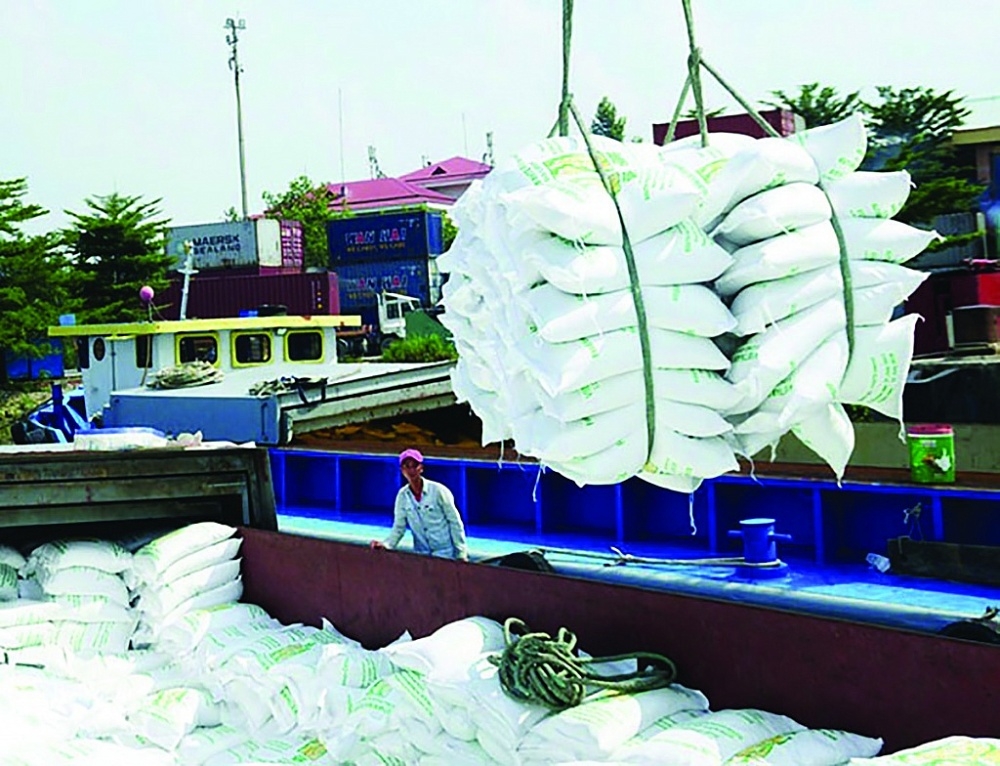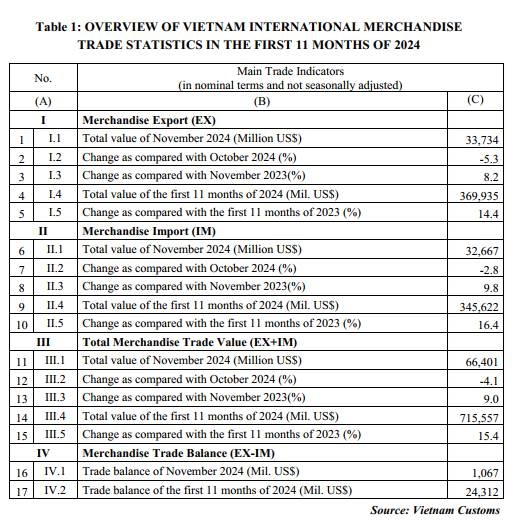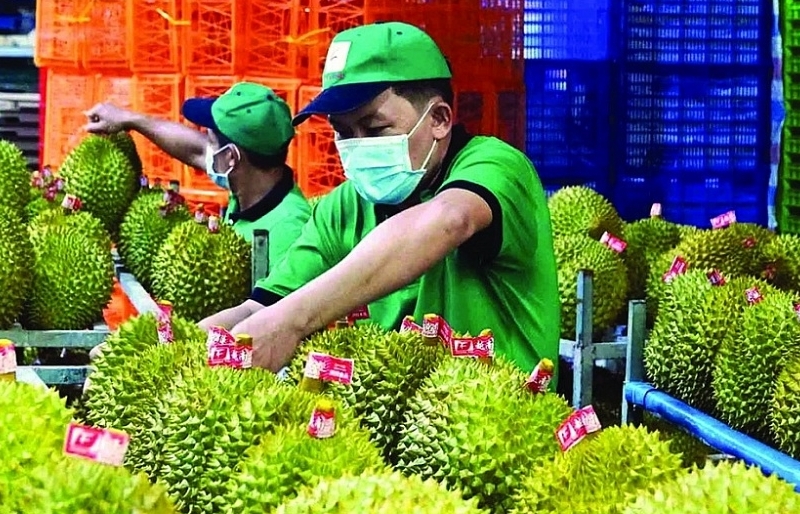3 years of EVFTA implementation: tremendous potential still exists in export growth
| "Win" together with EVFTA | |
| 3 years of EVFTA implementation accessed: significant room remains for Vietnam to capitalize |
 |
| Many agricultural products are benefiting from EVFTA through increased exports. Photo: NT |
Significant potential remains
EVFTA is often likened to a vital expressway directly connecting Vietnam's economy with the economies of the 27 member states of the European Union. Importantly, EVFTA stands out not just as Vietnam's first FTA with the EU but as a pioneering new-generation FTA. Alongside the Comprehensive and Progressive Agreement for Trans-Pacific Partnership (CPTPP), EVFTA is anticipated to provide additional impetus for Vietnam to enhance its institutional capacity in line with new development demands and evolving contexts.
Dr. Tran Thi Hong Minh, Director of the Central Institute for Economic Management (CIEM), views the 2020-2023 period as particularly challenging for the global economy in general and Vietnam in particular. The COVID-19 pandemic and various countries' epidemic prevention policies have resulted in significant global economic turbulence. This has profoundly impacted Vietnam's economic growth, including its exports, thus necessitating a diligent search for fresh opportunities and incentives to facilitate export recovery. It's worth noting that the EU has been a pivotal partner for Vietnam over many decades. In tandem with this cooperative journey, efforts have been devoted to broadening collaboration across various domains including trade, investment, tourism, and official development assistance.
"In this context, the optimism surrounding EVFTA is perfectly understandable. Past experiences with the implementation of other FTAs have made it clear to Vietnamese authorities and businesses that signing EVFTA is just a precondition. Realizing the benefits of EVFTA requires substantial efforts on Vietnam's part," emphasized Dr. Minh, Director of CIEM.
Delving into the outcomes after three years of EVFTA implementation, Mr. Nguyen Anh Duong, Head of the General Economic Department (CIEM), noted that EVFTA has substantially eased conditions for a robust export resurgence to the EU, particularly during the initial two years. The impact on EU imports in the third year was somewhat less favorable, likely due to difficulties faced by the global economy and the EU's specific challenges such as political conflicts, the Russia-Ukraine conflict, surging commodity prices in the global market, inflationary pressures, interest rate adjustments, and increasing import regulations within the EU market. The impact of EVFTA on import growth from the EU was not as pronounced as its effect on export growth to the EU.
Over the period of 2012-2022, Vietnam's exports to the EU showed a consistent trend of expanding in scale and partners, with an average export growth rate of 10.5% per year and an import growth rate of 6.4% per year. Notably, during the 2020-2022 period, when EVFTA was ratified, exports from Vietnam to the EU rebounded impressively. The decline in 2020 was transformed into a 14.2% surge in 2021 and an even more remarkable 16.8% increase in 2022.
Specifically, the total export turnover from Vietnam to the EU between August 2020 and July 2022 reached $83.4 billion, averaging $41.7 billion annually, surpassing the average export turnover during the 2016-2019 period by more than 24%. The utilization rate of EVFTA's tariff preferences reached 14.8% in 2020, increased to 20.2% in 2021, and soared to 24.5% in the first half of 2022. Notably, EVFTA has had a ripple effect on many population centers, as products that have made the best use of EVFTA's tariff preferences include rice (100%), footwear (74-98%), seafood (70-76%), plastics and plastic products (53-70%), and more.
According to Mr. Duong, EVFTA has also facilitated Vietnam's increased imports of machinery, equipment, and modern technology, contributing to the country's industrialization and modernization. This has resulted in improved product standards and increased global competitiveness for Vietnamese products. In general, Vietnamese exports have enhanced their ability to meet the import needs of the EU market immediately after EVFTA came into effect. Nevertheless, the structure of exports to the EU during the 2017-2021 period continued to shift towards reducing products with high technological content. Export activities to this market still fell short of expectations, highlighting the significant untapped potential for increased exports to the EU market.
Regarding foreign direct investment (FDI), the impact on the inflow of EU investments into Vietnam also demonstrates significant improvements in Vietnam's overall FDI attraction. With its numerous tariff preferences and the removal of market access restrictions across multiple sectors, EVFTA has opened doors for EU investors to access and expand their investments in Vietnam. In 2020, EU FDI in Vietnam reached nearly $1.376 billion in registered capital, marking an 8.6% decrease compared to 2019. This positioned the EU as the 8th largest source of FDI in Vietnam, accounting for 4.8% of the total FDI. In 2021, the situation improved, with total capital exceeding $1.405 billion, a 2.2% increase. This propelled the EU to 5th place, though its share in the total FDI slightly decreased to 5%. Longer-term data suggests that EVFTA may have played a pivotal role in attracting EU investments into Vietnam. Average investment capital in the 2017-2021 period (post-EVFTA negotiation) increased by 86% compared to the 2015-2016 period immediately before.
Despite significant impacts from the COVID-19 pandemic that began in 2020, EU investments in Vietnam have increased somewhat post-pandemic. The Netherlands, France, Luxembourg, Germany, Denmark, and Belgium are the top 6 EU investors in Vietnam. However, comparing accumulated registered capital at the end of July 2023 with that at the end of July 2020 indicates that the impact of EVFTA on attracting FDI from the EU to Vietnam remains relatively modest.
From an institutional perspective, EVFTA has played a pivotal role in promoting institutional reforms. Analysis results reveal that various domains, including trade, investment, intellectual property rights, sustainable development, financial services, and public procurement, have witnessed multiple adjustments in institutional arrangements and legal normative documents. Vietnam's legal system has largely aligned with the commitments made under EVFTA. The progress in preparing certain legal normative documents for EVFTA implementation has been somewhat faster compared to that for CPTPP. This could be attributed to lessons learned from the process of organizing CPTPP implementation. Nevertheless, Vietnam must carefully consider its approach to certain commitments in specific areas to avoid excessively rigid domestication and to ensure that the domestic market can adapt to new developments and contexts.
"To fully exploit the benefits of the EVFTA in the context of institutional reforms, Vietnam needs to review and improve legal normative documents during the implementation process, ensuring the comprehensive and consistent fulfillment of commitments. This includes considering policy adjustments that may be more important than commitments if necessary and suitable for the new context. Furthermore, there is a need to enhance coordinated efforts from central to local levels, improve the investment and business environment, bolster the competitiveness of businesses and the overall economy, and simplify regulations and procedures for issuing certificates of origin (C/O) for businesses exporting to partner markets. Proactive research on structural reform is also recommended to support EVFTA implementation," suggested the Head of the General Economic Department (CIEM).
Related News

Preliminary assessment of Vietnam international merchandise trade performance in the first 11 months of 2024
10:50 | 27/12/2024 Customs Statistics
Latest News

Việt Nam becomes second biggest garment exporter globally
16:36 | 27/12/2024 Import-Export

Vietnam may surpass Bangladesh in garment export: report
16:34 | 27/12/2024 Import-Export

Export tax to increase for 13 construction materials
14:31 | 27/12/2024 Import-Export

Building a brand to elevate Vietnamese rice
10:52 | 27/12/2024 Import-Export
More News

FTA Index helps measure the effectiveness of FTA implementation
10:51 | 27/12/2024 Import-Export

Nghệ An Province anticipates record FDI amidst economic upswing
15:49 | 26/12/2024 Import-Export

Green farming development needs supportive policies to attract investors
15:46 | 26/12/2024 Import-Export

Vietnamese enterprises adapt to green logistics trend
15:43 | 26/12/2024 Import-Export

Paving the way for Vietnamese agricultural products in China
11:08 | 26/12/2024 Import-Export

VN seafood export surpass 2024 goal of $10 billion
14:59 | 25/12/2024 Import-Export

Exporters urged to actively prepare for trade defence investigation risks when exporting to the UK
14:57 | 25/12/2024 Import-Export

Electronic imports exceed $100 billion
14:55 | 25/12/2024 Import-Export

Forestry exports set a record of $17.3 billion
14:49 | 25/12/2024 Import-Export
Your care

Việt Nam becomes second biggest garment exporter globally
16:36 | 27/12/2024 Import-Export

Vietnam may surpass Bangladesh in garment export: report
16:34 | 27/12/2024 Import-Export

Export tax to increase for 13 construction materials
14:31 | 27/12/2024 Import-Export

Building a brand to elevate Vietnamese rice
10:52 | 27/12/2024 Import-Export

FTA Index helps measure the effectiveness of FTA implementation
10:51 | 27/12/2024 Import-Export





